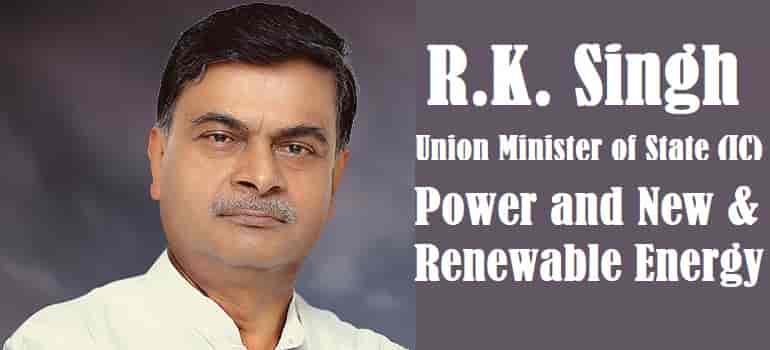
The Minister of State Power and New & Renewable Energy & Minister of State (Skill Development and Entrepreneurship), R. K. Singh inaugurated the Northern Region Renewable Energy Management Centre (NR-REMC) at a function in New Delhi, on 28th February, 2020.
On the occasion, the Minister dedicated to the nation, eleven REMCs, placing India among a league of few nations, which have state-of-the-art management centers for renewable energy integration.
While speaking at the event Singh congratulated all those who planned the Green Corridors and REMCs and said that they are showing more vision that was shown by Europe and Unites States when they started at renewable energy management.
The Government of India’s target of 175 GW RE Capacity by 2022 driving accelerated RE penetration poses challenges to the grid management due to intermittent and variable nature of RE generation.
The renewable energy management centers are equipped with Artificial Intelligence based RE forecasting and scheduling tools and provide greater visualization and enhanced situational awareness to the grid operators.
The Renewable Energy Management Centers (REMCs) are co-located with the State Load DispatchCenters (SLDCs) in Tamil Nadu, Karnataka, Andhra Pradesh, Maharashtra, Madhya Pradesh, Gujarat & Rajasthan and in RLDCs at Bengaluru, Mumbai and New Delhi and at the NLDC. Presently, 55 GW of Renewable (Solar and Wind) is being monitored through the eleven REMCs.
Government of India had approved the implementation of the REMCs as a Central Scheme and had mandated POWERGRID, a Maharatna CPSE under Ministry of Power as Implementing Agency. These REMCs are being managed by Power System Operation Corporation of India Ltd. (POSOCO) at Regional and National level and at State level by State Load DespatchCentres (SLDCs).
During the event the minister also released a Report by POSOCO on “Analysis of Impact of Solar Eclipse – 26th Dec’19 on Indian Power System”.
The report covered various areas such as solar generation forecasting, ramp estimation, behavior of PV plants during solar eclipse. The variation in Global Horizontal irradiance during solar eclipse for plants falling in annular and partial eclipse zone have been analysed in the report.

